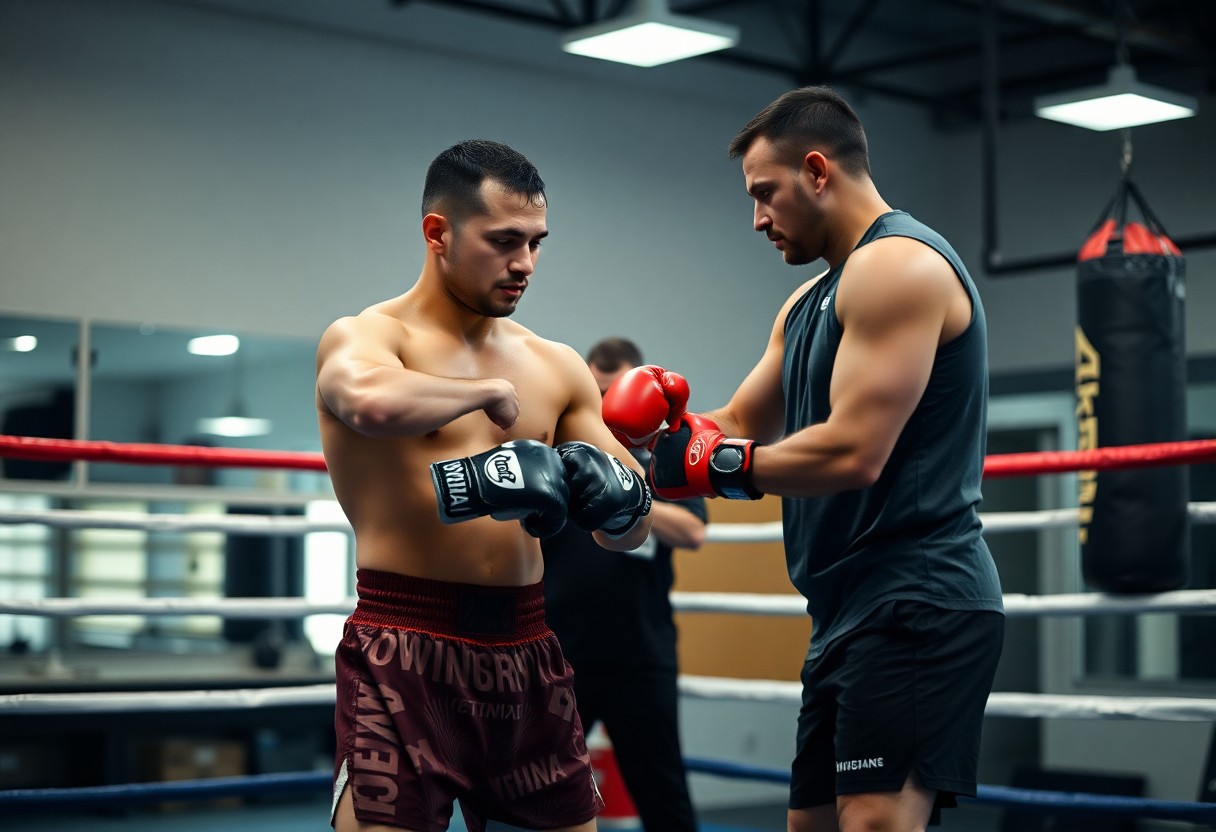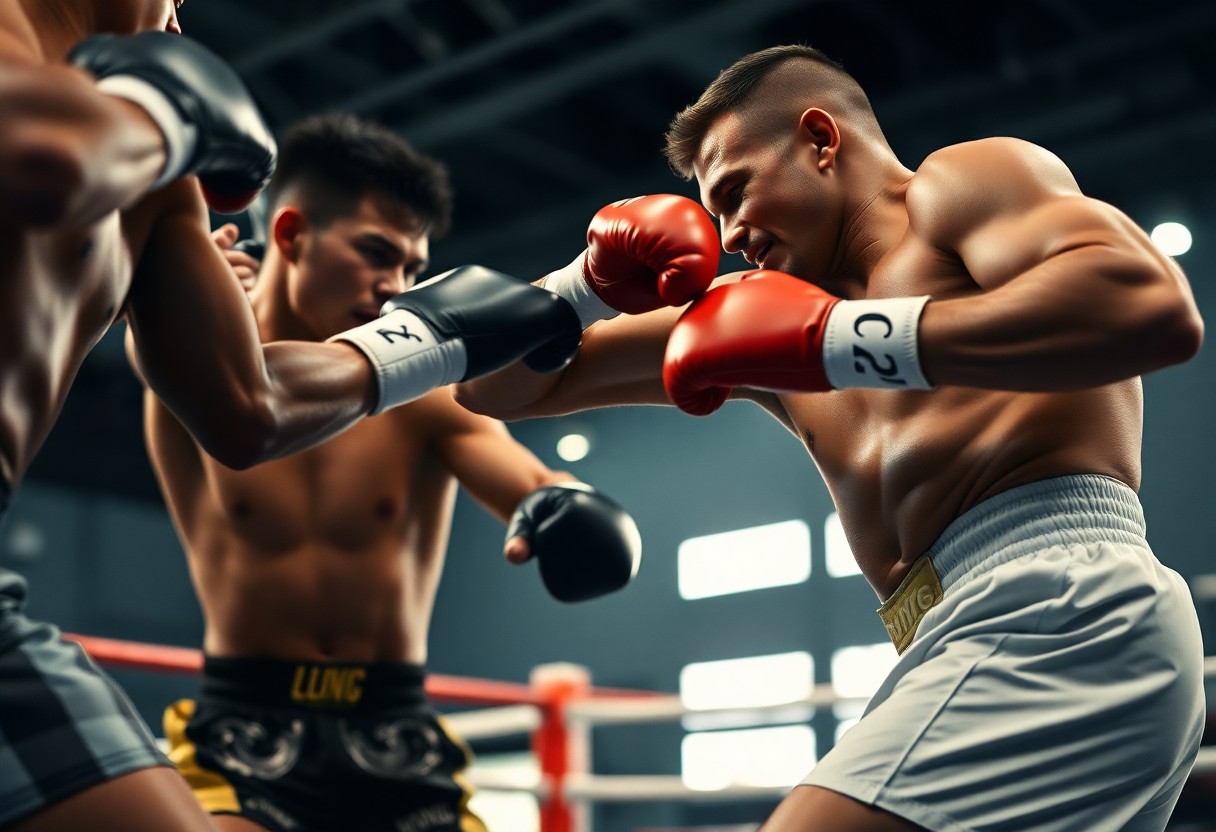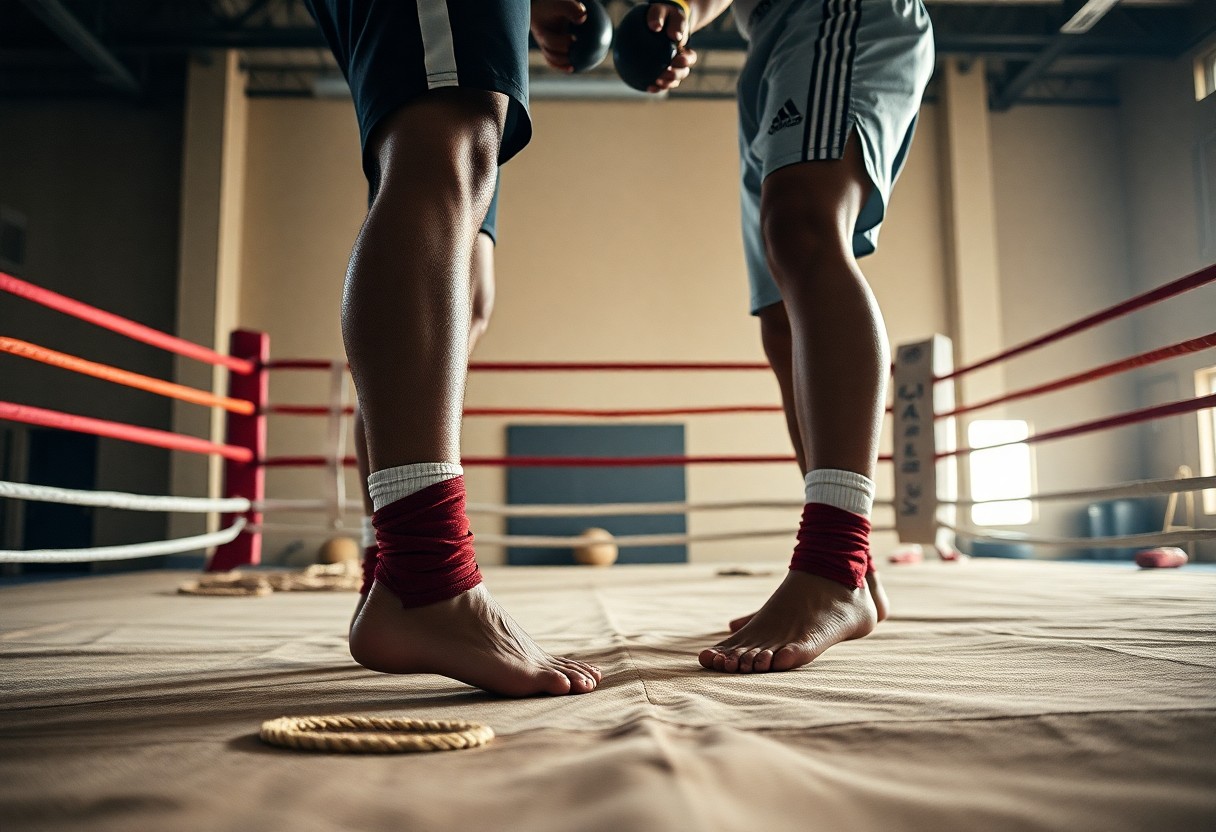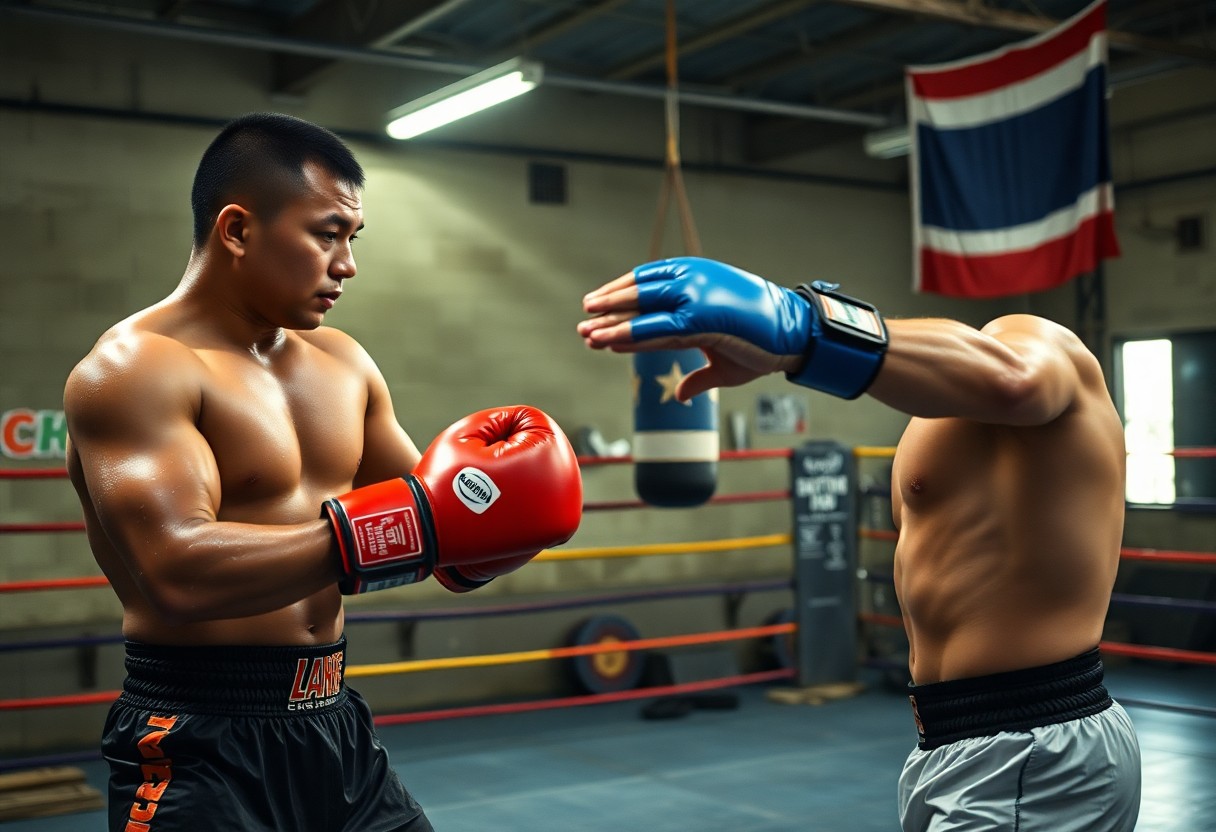
Over the centuries, Muay Thai has evolved into a formidable martial art that emphasizes the use of eight points of contact: fists, elbows, knees, and shins. This guide dives deep into the teachings of renowned Muay Thai champions who have honed their skills through rigorous training and profound dedication. Discover the techniques and strategies employed by these fighters to improve your own practice and embrace the rich traditions of this combat discipline.
Types of Muay Thai Techniques
Muay Thai encompasses a variety of techniques that utilize the body’s eight points of contact. These techniques include strikes, clenching, and defensive maneuvers that create a dynamic fighting style. Key techniques in Muay Thai include:
| Striking Techniques | Clinch Techniques |
| Elbow Strikes | Positioning |
| Knee Strikes | Control |
| Leg Kicks | Throws |
| Punches | Defensive Maneuvers |
This combination of techniques makes Muay Thai a multifaceted art form that demands both skill and strategy.
Striking Techniques
Striking techniques form the backbone of Muay Thai proficiency, showcasing the fighter’s ability to deliver powerful and precise blows. Essential techniques like elbow strikes and knee strikes focus on close-range combat, while leg kicks and punches target the opponent’s mobility and defenses. Mastering these striking methods not only enhances offensive capabilities but also reinforces defensive skills through effective counterattacks.
Clinch Techniques
Clinch techniques play a significant role in Muay Thai, where fighters engage in close quarters to gain control over their opponent. Utilizing positioning and control, practitioners can deliver effective knee strikes while simultaneously preventing escape. These techniques also allow for throws that can significantly alter the momentum of a fight, creating opportunities for strikes and scoring points. A fighter well-versed in clinch mechanics can dominate their opponent through tactical leverage and timing.
Step-by-Step Guide to Mastering Techniques
| Step | Description |
|---|---|
| 1 | Focus on footwork to establish balance and positioning. |
| 2 | Incorporate basic punches, kicks, elbows, and knee strikes. |
| 3 | Practice combinations for fluidity in attack. |
| 4 | Integrate defensive movements to counter opponents. |
| 5 | Drill clinch techniques to control opponent effectively. |
Basic Striking Drills
Basic striking drills form the foundation of a strong Muay Thai practice. These involve repetitive movements of punches, kicks, elbows, and knees to develop muscle memory and precision. Utilizing equipment like bags and pads enhances targeting skills, while shadow boxing allows for technique refinement without a partner. Regularly performing these drills can significantly improve power, accuracy, and speed.
Advanced Clinch Drills
Advanced clinch drills focus on maximizing leverage and control during grappling exchanges. Practicing these techniques can streamline transitions between offensive and defensive maneuvers. Key elements include pummeling, knee strikes while in the clinch, and breaking free from your opponent’s grip. High-level practitioners utilize these drills to maintain dominance and avoid counters effectively.
- Pummeling drills to establish grip dominance.
- Knee strike repetitions to improve offensive capabilities.
- Counter techniques to disengage effectively.
- Partner drills to simulate real fight scenarios.
- Resistance training to strengthen clinch grip.
| Advanced Clinch Drills | Details |
|---|---|
| Technique | Focus on breaking grips and transitioning into strikes. |
| Partner Interaction | Work with a training partner to mimic realistic competition conditions. |
| Resistance Training | Utilize weights or resistance bands to strengthen clinch muscles. |
| Combos | Combine strikes with clinch techniques for fluid movement. |
Essential Tips for Training
Effective training is foundational in mastering Muay Thai. Incorporate the following imperative tips to elevate your skills:
- Focus on enhancing technique over power.
- Develop flexibility through regular stretching routines.
- Implement conditioning drills that mimic fight scenarios.
- Practice sparring to improve timing and distance management.
- Stay consistent with nutrition for peak performance.
Perceiving the complexity of these elements will enable you to create a well-rounded training regimen.
Mental Preparation
Mental preparation is as vital as physical training in Muay Thai. Visualizing fights and outcomes can enhance performance under pressure. Practicing mindfulness or meditation helps fighters maintain calmness and focus, reducing anxiety during bouts. By fostering a strong mental attitude, you’ll be better equipped to face challenges in the ring.
Physical Conditioning
Physical conditioning is imperative in preparing your body for the demands of Muay Thai. A well-rounded program should include strength training, cardiovascular work, and endurance training. Incorporating exercises like running, shadowboxing, and weight lifting builds the stamina and strength necessary for effective fighting. Moreover, conditioning your muscles and improving your cardiovascular fitness enhances your ability to perform at your best during longer training sessions or fights.
Factors Influencing Performance
Performance in Muay Thai is affected by several key elements that determine a fighter’s ability to excel in the ring. These factors include experience level, training environment, physical conditioning, and mental resilience. A fighter’s unique combination of these elements influences their technique, strategy, and overall effectiveness. After recognizing these influential factors, athletes can tailor their training to enhance performance.
Experience Level
The experience level of a fighter plays a significant role in their performance. Veterans in the sport possess not only refined techniques but also invaluable knowledge of fight tactics. They understand how to read opponents and adapt strategies on the fly, something less experienced fighters are still mastering. Competitions from various backgrounds, such as amateur and professional, further shape their journey.
Training Environment
A supportive training environment is crucial for any fighter’s development. Access to skilled coaches, training partners, and quality facilities significantly impacts skill acquisition and improvement. Surrounding oneself with experienced fighters fosters an atmosphere of learning and competition, allowing individuals to hone their techniques. Moreover, consistent exposure to realistic fight scenarios prepares fighters for the pressures of mainstream competitions.
In a training environment, particularly elite gyms, fighters often engage in high-intensity sparring sessions that simulate real fight conditions. This aspect is critical in building grit and adaptability. For instance, gyms in Thailand like Fairtex and Sitmonchai focus heavily on traditional techniques while exposing trainees to varied opponents, enhancing their versatility and readiness for diverse fighting styles. In the aggregate, a positive training environment cultivates the necessary skills and mindset required for optimal performance in the ring.
Pros and Cons of Different Training Styles
| Pros | Cons |
|---|---|
| Enhanced skill development | Requires more time commitment |
| Increased physical conditioning | Potential for overtraining |
| Diverse techniques exposure | Information overload |
| Personalized instruction | Higher costs for individual sessions |
| Motivation from peers | Distractions in group settings |
| Opportunities for sparring | Risk of injury in competitive environments |
| Structured training environment | Less adaptability to individual needs |
| Access to shared resources | Limited focus from trainers |
| Variety in workout styles | Difficulty in tracking personal progress |
| Fostering a sense of community | Group dynamics can affect training intensity |
Traditional vs. Modern Training
Traditional training methods in Muay Thai emphasize the mastery of techniques through repetition and respect for the art’s history. In contrast, modern training incorporates advanced conditioning techniques, technology, and cross-training strategies for overall performance enhancement. Traditionalists often criticize modern approaches for losing the essence of authentic practice, while proponents argue that modern techniques can elevate fighters’ abilities and prepare them for diverse opponents.
Individual vs. Group Training
Individual training offers personalized attention and tailored workout regimens that cater specifically to a fighter’s strengths and weaknesses. Conversely, group training fosters camaraderie and sparring opportunities, allowing fighters to learn from each other and simulate real fight conditions. Both methods have their merits, making a balanced approach beneficial for comprehensive skill mastery.
Individual training allows fighters to focus on honing technique without distractions, enabling them to refine their skills at their own pace. This personalized approach often results in significant improvements in specific areas, such as footwork or striking precision. Group training, however, brings energy and motivation to sessions, encouraging fighters to push each other beyond their limits. It is important for fighters to assess their personal learning styles and training goals, as combining both methods can lead to a well-rounded development in Muay Thai.
Lessons from Famous Muay Thai Fighters
Numerous renowned Muay Thai fighters offer invaluable insights into the discipline through their experiences. For instance, legends like Buakaw Banchamek and Saenchai have demonstrated the importance of perseverance, adaptability, and mental toughness. Their journeys highlight that success stems not just from talent but from relentless dedication and strategic thinking both in training and the ring.
Training Regimens
Effective training regimens, as seen with fighters like Saenchai, include a combination of cardio, strength training, and technical drills. These routines often incorporate shadow boxing, pad work, and bag training, tailored to develop specific skills, endurance, and explosive power. Fighters typically engage in two to three training sessions daily to push their limits and achieve peak performance.
Fighting Strategies
Fighter tactics evolve with every bout, influenced by individual styles and opponents. For instance, Buakaw’s ability to control distance and utilize powerful leg kicks exemplifies how strategic placement and timing can dismantle an adversary’s game plan. Understanding an opponent’s weaknesses and adapting accordingly is important for success in the ring.
Adopting fighting strategies from elite fighters often emphasizes the dual necessity of attack and defense. For example, Saenchai is renowned for his use of deceptive feints, circling movements, and quick counters, demonstrating that anticipating your opponent’s next move can lead to openings for strikes. Grounding tactical awareness in both observation and instinct is fundamental, allowing fighters to exploit even minor lapses in their opponent’s defense while maintaining a solid guard.
Conclusion
On the whole, mastering the art of eight limbs, as demonstrated by renowned Muay Thai fighters, requires dedication, discipline, and a deep understanding of technique. Their journeys provide invaluable insights into the importance of striking, clinching, and fluidity in movement, highlighting that success in this combat sport is earned through consistent practice and mental resilience. By analyzing their techniques and training regimens, aspiring fighters can cultivate their skills and develop a profound appreciation for this ancient martial art.
Q: What are the main techniques covered in ‘Mastering The Art Of Eight Limbs’?
A: The book probes into fundamental Muay Thai techniques such as punches, elbows, knees, and kicks, emphasizing how to effectively use all eight limbs in combat. Each technique is analyzed through lessons from renowned fighters, providing insights on timing, accuracy, and power.
Q: How does the book incorporate lessons from famous Muay Thai fighters?
A: ‘Mastering The Art Of Eight Limbs’ features biographical stories and training philosophies of legendary Muay Thai fighters. These real-life examples illustrate the application of techniques and strategies in various fight scenarios, allowing readers to learn directly from their experiences.
Q: What level of experience is this book suited for?
A: The book is designed for a wide range of practitioners, from beginners to advanced fighters. It provides foundational concepts for novices while also offering advanced techniques and strategies that seasoned athletes can apply to enhance their skills.






